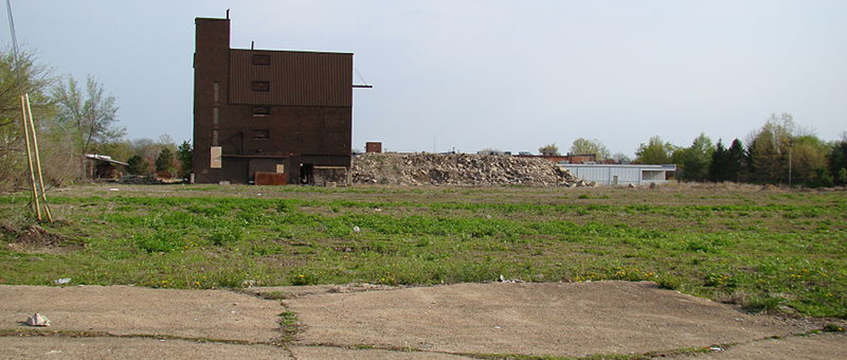Michael Gove’s recent announcement of moves to accelerate brownfield development once again dials up the government’s emphasis on urban areas as the solution to crises affecting housebuilding. With total housing starts and completions in the first six months of the financial year down by 23% and 9% respectively, compared with the previous year, according to Homes England figures, the timing couldn’t be more critical.
Brownfield has understandably been a firm focus for policy in recent years. Building on urban sites presents a prime opportunity to not just attend to the country’s precarious housing supply, but to do so with a sense of cohesion and respect for place – regenerating and reinventing city centres and much-loved high streets.
The Strengthening planning policy for brownfield development consultation proposals focus on lowering barriers to development, including steps to greenlight housing schemes on former commercial sites and to further extend permitted development rights. They also increase pressure on local authorities to manage a register of brownfield land suitable for housing.
While covering England at large, the consultation, which closes on 26 March, homes in on the capital as well. It seeks views on how the London Plan can speed up the delivery of homes, including the potential to raise the threshold at which planning applications are referrable to the mayor. The current level – for schemes of 150 homes and above – has seen too many applications end up in a lengthy process between London boroughs and the Greater London Authority. It is the sector’s hope that a higher threshold will ensure that only significant sites of real strategic importance are referred, accelerating the planning process for those that are not and cutting through bureaucratic red tape.
The questions coming back from the industry to the secretary of state are twofold: will these measures be enough? And how likely are they to come to fruition as we head towards a general election later in the year?
Maximising urban land opportunity
On the first point, we can be optimistic that these steps can help reduce the viability challenges associated with brownfield land and they are not acting in isolation.
There are already several mechanisms in place to improve rates of brownfield development, and the role of the public sector to stimulate investment is well-established. Homes England’s strategic pivot last year towards placemaking and regeneration is designed to help brownfield thrive, building on well-publicised successes, including the Stratford Olympic Park and King’s Cross. Some £51.6m in funding was announced in January through the Greater Manchester Authority’s Brownfield Housing Fund – supporting 3,380 homes across 31 sites.
Collectively, this concerted support can play an important role in unlocking homes. However, brownfield development is complex by its very nature and the barrier for entry is still painstakingly high, even for the largest of developers. Ultimately, if the government wants to accelerate urban development, wider challenges need to be taken into account too.
Addressing viability pressures
In reality, developers are still facing a perfect storm of pressures – economic, regulatory and environmental – when it comes to bridging the viability gap.
The news that the country has entered a technical recession, alongside Office for National Statistics figures showing construction output decreasing by 1.3% in the period from October to December 2023, provides little comfort to homebuyers, housebuilders, registered providers and their supply chains balancing the pressures of high interest rates.
On top of this, the new building safety levy on residential development will add an extra layer of strain. While details are currently being finalised following a technical consultation on levy collection and managing disputes that closed in February, prudent developers are already starting to factor this into their forward land appraisals.
A bright point for urban development is that the levy is anticipated to be charged at a 50% discount on brownfield land compared with greenfield. Exclusions for affordable housing will also apply.
Further cost pressures come in the form of the biodiversity net gain mandates which have now been brought in. These will have a more complex relationship with brownfield. On one hand, sites in urban areas can have a low biodiversity baseline, making a gain easier to demonstrate. On the other, space constraints can push BNG strategies to offsite measures which will likely increase expenditure and the burden of delivery.
Managing risk
Other policy commitments are much less certain as we look ahead to an election. The proposed introduction of the infrastructure levy under the Levelling-up and Regeneration Act 2023 has raised alarm bells for many developers. But the Labour Party’s reluctance to take up the initiative on the IL has slowed momentum and created an air of uncertainty of whether it will even be implemented at all.
Could the same fate await Gove’s brownfield proposals if we see a change of government? The hope should be that, whatever the outcome, the sense of lowering the barriers to urban regeneration should be recognised and endorsed.
In the meantime, housebuilders and providers will need to navigate competing pressures on viability wisely. It will involve effective partnerships with local authorities and planning officers to bolster their relationships and gain greater understanding as to how they will manage and enforce new policies. This will be vital for effective delivery and boosting the confidence of the sector, as well as supporting more strategic redevelopment of urban spaces.
Alongside stronger engagement, developers would be prudent to consider a range of potential scenarios. Accelerating brownfield consents and cutting through red tape in London specifically, are encouraging signs for an industry under pressure. But without additional support, housebuilders should be carefully planning their next moves to deliver the homes we urgently need.
Read and respond to the consultation here
Lindsay Garratt is a partner at Winckworth Sherwood
Follow Estates Gazette








